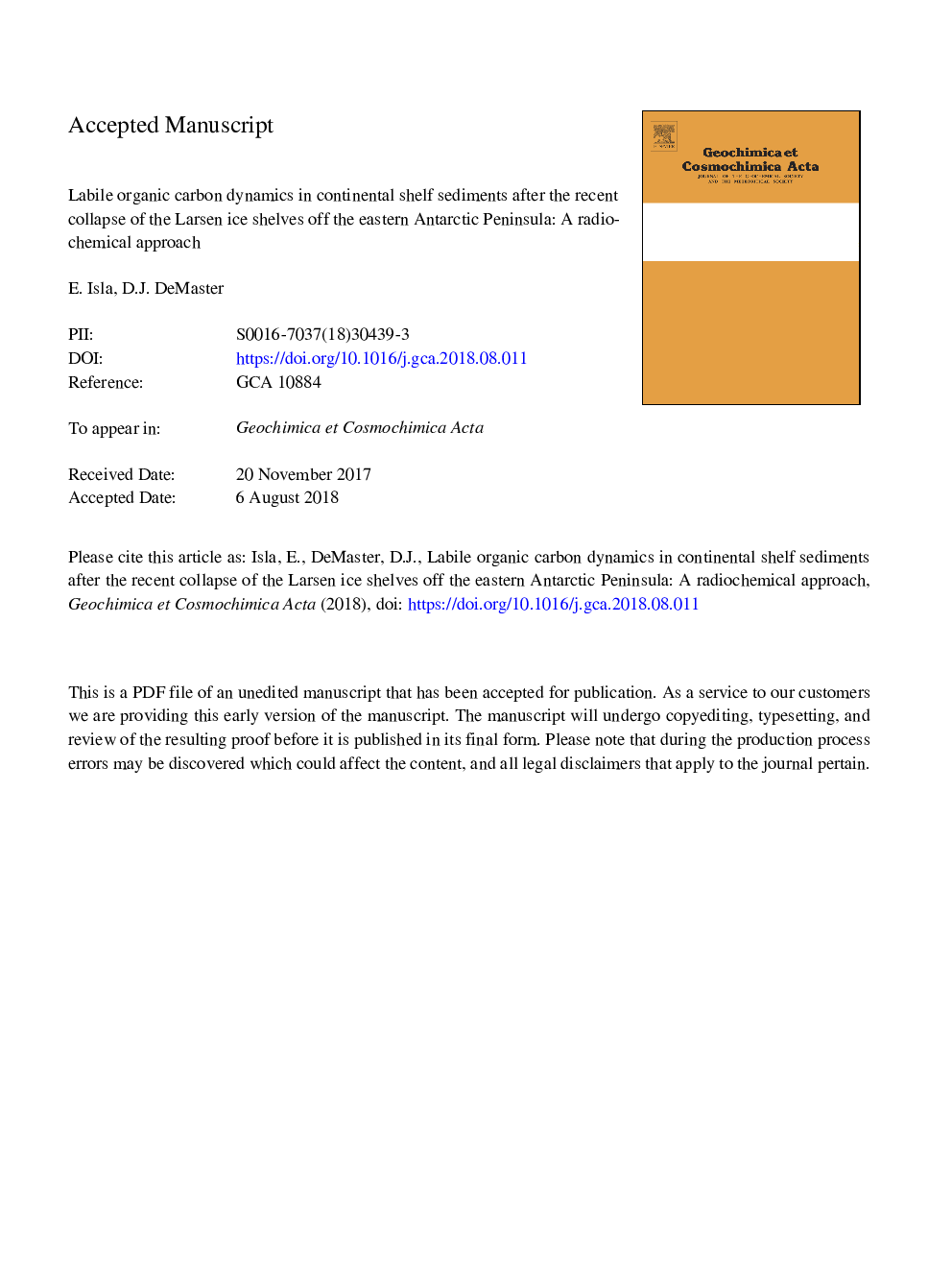| کد مقاله | کد نشریه | سال انتشار | مقاله انگلیسی | نسخه تمام متن |
|---|---|---|---|---|
| 10224345 | 1701097 | 2018 | 32 صفحه PDF | دانلود رایگان |
عنوان انگلیسی مقاله ISI
Labile organic carbon dynamics in continental shelf sediments after the recent collapse of the Larsen ice shelves off the eastern Antarctic Peninsula: A radiochemical approach
ترجمه فارسی عنوان
پس از فروپاشی اخیر قفسه یخ لارسن از شبه جزیره شرقی قطب جنوب، دینامیک کربن آلی خوب در رسوبات قاره افقی: رویکرد شیمیایی
دانلود مقاله + سفارش ترجمه
دانلود مقاله ISI انگلیسی
رایگان برای ایرانیان
کلمات کلیدی
موضوعات مرتبط
مهندسی و علوم پایه
علوم زمین و سیارات
ژئوشیمی و پترولوژی
چکیده انگلیسی
Labile organic carbon (LOC) dynamics (i.e., of recently produced, planktonic material) and sediment dynamics were studied in the seabed using naturally occurring 14Corg and 210Pb measurements in the region where the Larsen Ice Shelves A and B were floating almost two decades ago. A non-steady-state diagenetic model was used to estimate sediment mixing coefficients as well as LOC fluxes to the seabed and LOC turnover times (i.e., mean residence times) in a suite of 14 sediment cores from the continental shelf, including a glacial trough. At four of the stations, cores were collected during 2007 and 2011 cruises, enabling a time-series approach for understanding the evolution of sedimentary processes and LOC dynamics in the deposits below a collapsed ice shelf. Sediment mixing coefficients, based on non-steady-state 210Pb profiles, varied between 0.01â¯cm2 yâ1 and 1.6â¯cm2 yâ1 in these post-ice shelf sediments. These values were similar to those found in polar deep-sea environments, where sedimentary conditions are less dynamic than in shallower provinces. LOC, whose abundance decreased uniformly with depth, was detected to depths ranging from 2 to 16â¯cm, with LOC seabed inventories varying from 1.5 to 22â¯mg LOC cmâ2. Excess 210Pb and LOC fluxes were relatively uniform across the study area suggesting that similar particle fluxes have taken place within the Larsen system since the disintegration of the various ice shelves. The LOC mean residence time at the different stations varied from 3 y to >60 y. The 14Corg approach, calculating LOC content based on a two-end member model with planktonic 14Corg as the labile carbon end member, most closely correlated with the lipid content of the sediment, which has been considered one of the best descriptors of reactive organic matter readily available to benthic consumers. We suggest that the irregular combination of sea ice coverage, organic matter production and supply to the sea floor introduce scatter in the determination of sediment and LOC dynamics such that short-term temporal (<5 years) and spatial trends could not be readily resolved.
ناشر
Database: Elsevier - ScienceDirect (ساینس دایرکت)
Journal: Geochimica et Cosmochimica Acta - Volume 242, 1 December 2018, Pages 34-50
Journal: Geochimica et Cosmochimica Acta - Volume 242, 1 December 2018, Pages 34-50
نویسندگان
E. Isla, D.J. DeMaster,
